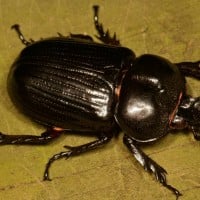Top Ten Best Flying Insects
Insects are amazing and fascinating creatures. There 2 kinds of insects: those who fly and those who don't. Here are some of the best flying ones. Butterflies are part of the class of insects in the order Lepidoptera, along with the moths. Adult butterflies have large, often brightly coloured wings, and conspicuous, fluttering flight.
Butterflies are part of the class of insects in the order Lepidoptera, along with the moths. Adult butterflies have large, often brightly coloured wings, and conspicuous, fluttering flight. Butterflies are insects from the order Lepidoptera
Butterflies are known for their beautiful colors and patterns. Their colors vary from plain boring brown to a brilliant mix of colors (unfortunately some of the most beautiful ones are about to flutter away forever). They're important to the enviroment as they're flower pollinators. Currently there are about 17,500 species of butterflies known (which is few compared to their close relatives the moths)
Fun fact: Butterflies taste with their feet. Their taste sensors are located there
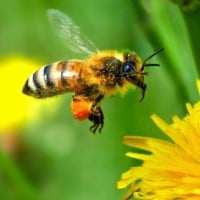
Bees are insect the order Hymenoptera, suborder Apocrita
Bees are social animals, living in colonies in hives with a queen. Bees feed on nectar and pollen, nectar as energy source and pollen as protein and other nutrients. These adorable little guys are known for being flower pollinators. The most well-known species, the Europian honeybee, is known for producing honey and beeswax. Beekeeping has been going on for millenia, since at least oj the Ancient Egypt and Ancient Greek period. Bees have lots of used for us and he enviroment. Not only that they pollinate flowers, they produce honey, beeswax, and bees themselves are edible (the Javanese dish botok tawon is made of bee larvae and coconut)
Bees are often confused with their close relatives wasps. Bees are more round-shaped than wasps, and wasps are often more aggresive than bees (that doesn't mean bees aren't aggresive, check out the Africanized honey bee)
Fun fact: A male bee dies after mating because his genital will rip off during the massive ejaculation. Ooh, that's gotta really painful!
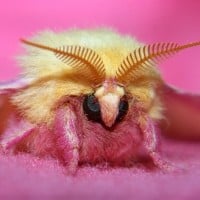 Moths comprise a group of insects related to butterflies, belonging to the order Lepidoptera. Most lepidopterans are moths; and there are thought to be approximately 160,000 species of moth, many of which are yet to be described.
Moths comprise a group of insects related to butterflies, belonging to the order Lepidoptera. Most lepidopterans are moths; and there are thought to be approximately 160,000 species of moth, many of which are yet to be described. Moths are insects from the order Lepidoptera
These insects are quite overshadowed. Butterflies aren't the only beautiful insects! Currently, there are lots of species of moths known: about 160,000 species (most insects from the order Lepidoptera are moths! ). Moths are nocturnal animals, but some species can be crepuscular (active at dusk) and diurnal (active at both day and night). They, like butterflies, pollinate flowers
Moths are often confused with their close relatives butterflies. A moth's antennae are bushier than a butterfly's, and a moth's body is thicker than a butterfly's. Moths are often duller in color than butterflies, but there are quite a lot of colorful and beautiful moths too (heck, I think some moth species are more beautiful than butterflies themselves)
Fun fact: Some moth species don't have any mouths in their adult stage, thus making them unable to eat and die of starvation about a week later
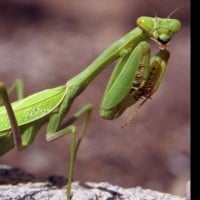
Mantises are insects from the order Mantodea
There are currently over 2,400 species of mantis known. The largest mantis family is the Mantidae. Mantises have triangular heads and large, bulging eyes. Every mantises have greatly enlarged forelegs. They're often referred to as "praying mantis" because of their resting position. Mantises are predators, and feed on smaller insects. They use their enlarged forelegs to catch and grip their prey. Female mantises sometimes practice sexual cannibalism (a female mantis might eat the male after mating). Mantises are among the insects most commonly kept as pets
Only certain mantis species can fly. Those mantis species that are able to fly have wings large enough to be used to fly, but other species have small wings or even no wings at all
Fun fact: Mantises can turn their heads 180 degrees, because the joint that connects a mantis' head with its prothorax is very flexible
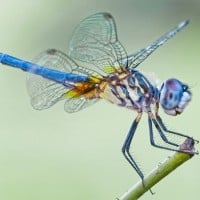
Dragonflies are insects from the order Odonata, suborder Anisoptera
Dragonflies are fast fliers. They're carnivores, and feed on other smaller insects. They have 2 pairs of strong wings and 2 large eyes
Dragonflies are closely related to damselflies and are often confused with them. Damselflies are smaller and weaker than dragonflies. Dragonflies rest with their wings held flat, while most damselflies fold their wings
Fun fact: Dragonflies are fierce predators since they were born! Dragonfly nymphs eat tadpoles, small fish, mosquitoes, other insect larvae, and even each other!
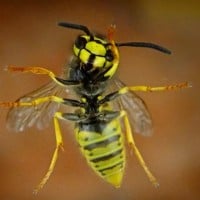
Wasp is a term used on any insect from the order Hymenoptera and suborder Apocrita that is not a bee nor an ant
Wasps can be either eusocial or solitary. The most well-known wasps such as yellow jackets and hornets are eusocial, but most wasps are solitary. An insect everyone seems to hate. Often seen as insects who do nothing but sting, but that's actually quite false. Wasps do have uses. Some species pollinate flowers while others control pest. Wasps are fascinating if you explore deeper. Some wasps have incredible abilities (like voodoo wasps) and some are just beautiful (like cuckoo wasps)
Fun fact: The tarantula hawk has an extremely painful sting, but good news: getting stung is unlikely and the pain only last for about 5 minutes. Speaking of tarantula hawk, it feeds on tarantulas, so if you hate tarantulas, better thank this guy for controlling their population
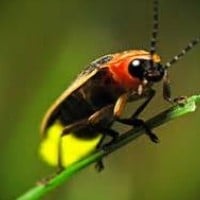
Also known as lightning bugs. Fireflies are insects from the order Coleoptera, family Lampyridae
Fireflies are magneficent insects with one of the most beautiful abilities an organism could have, which is bioluminescence. Bioluminescence is an organism's abilitiy to produce light. During twilight, they use their bioluminescence ability to attract mates. Their larvae, known as glow worms in Eurasia (in America, "glow worm" also refers to their relatives Phengodidae), are bioluminescent as well. In some species, the females lack wings. There are currently about 2,000 species known, and each firefly species have their own unique pattern of light-flashing. Their biolumescence vary too. Their bioluminescence can be yellow, green, or orange
Despite the name, they're not flies. They're beetles
Fun fact: Firefly larvae are carnivorous, feeding on snails, but adult fireflies feed on pollen and nectar. Although some adult fireflies can be carnivorous and feed on other fireflies
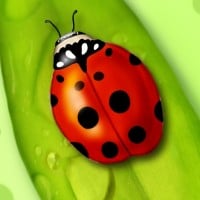
Also known as ladybirds. Ladybugs are small beetles (not exactly bugs) from the family Coccinellidae
The most notable feature of these beetles is their spotted wing covers. The colors of their wing covers vary. Some species like the Vibidia duodecimguttata has white spots and brown background. Currently there are over 6,000 species of ladybugs known. Ladybugs are considered as useful animals. Some species feed on agricultural pests such as aphids and scale bugs. Some also lay theit eggs on the colonies of the pests so the larvae will get an immediate food source. However, some ladybug species are herbivorous, which means they're the pests
Fun fact: The "lady" part of the name refers to Virgin Mary. Legend says that long ago, crops in Europe were plagued with pests, so the farmers pray to Virgin Mary. Then, they started seeing ladybugs on their farm, saving their crops from the pests, and so they started calling the beetles "lady beetles"
 A bumblebee, also written bumble bee, is a member of the bee genus Bombus, in the family Apidae. The brood parasitic or cuckoo bumblebees have sometimes been classified as a subgenus or genus, Psithyrus, but are now usually treated as members of Bombus.
A bumblebee, also written bumble bee, is a member of the bee genus Bombus, in the family Apidae. The brood parasitic or cuckoo bumblebees have sometimes been classified as a subgenus or genus, Psithyrus, but are now usually treated as members of Bombus.
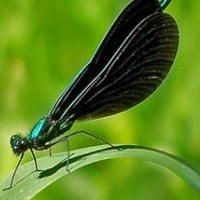
Damselflies are insects from the order Odonata, suborder Zygoptera
They're basically smaller (and cuter) dragonflies (they're closely related to them). Like dragonflies, damselflies are predatory (both in their nymph and adult stage). Certain species are sexually dimorphic (which means males and females look different), males usually being more brightly colored than the females. While damselflies are relatively small, members of the family Pseudostigmatidae are exceptions. They're large, with wingspan reaching 19cm and body length reaching 13cm
Fun fact: Damselflies, along with dragonflies, form a heart position when mating
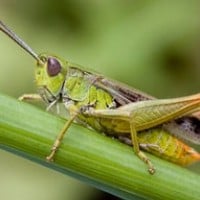
Grasshoppers are insects from the order Orthoptera, suborder Caelifera
Grasshoppers are ground-dwelling insects. They have powerful hind legs, which made it possible for them to leap in great distances, up to 20 times their own body length! Some grasshoppers can change colors and behaviours and form swarms (known as "locusts" under this circumstance). Grasshoppers are beautiful insects, but they're serious pests especially if they swarm in millions as locusts. Grasshoppers rely on camouflage to escape predators, but if they're detected, they will attempt to startle the predator with brilliantly-colored wing-flash while jumping and launching themselves to the air, and then fly for a short distance. Some grasshopper species are colorful, but those colors are warning to predators, meaning that they're either poisonous or distasteful
Grasshoppers are sometimes referred to as short-horned grasshoppers to distinguish them from katydids
Fun fact: A grasshopper's auditory organs are located on their abdomen
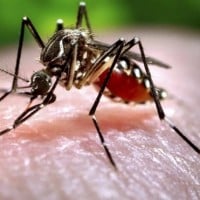 Spanish for "small fly," mosquitoes are insects that have been known to cause various diseases. A sample of diseases caused by mosquitoes: malaria, yellow fever, Chikungunya, West Nile virus, dengue fever, filariasis, Zika virus.
Spanish for "small fly," mosquitoes are insects that have been known to cause various diseases. A sample of diseases caused by mosquitoes: malaria, yellow fever, Chikungunya, West Nile virus, dengue fever, filariasis, Zika virus.
